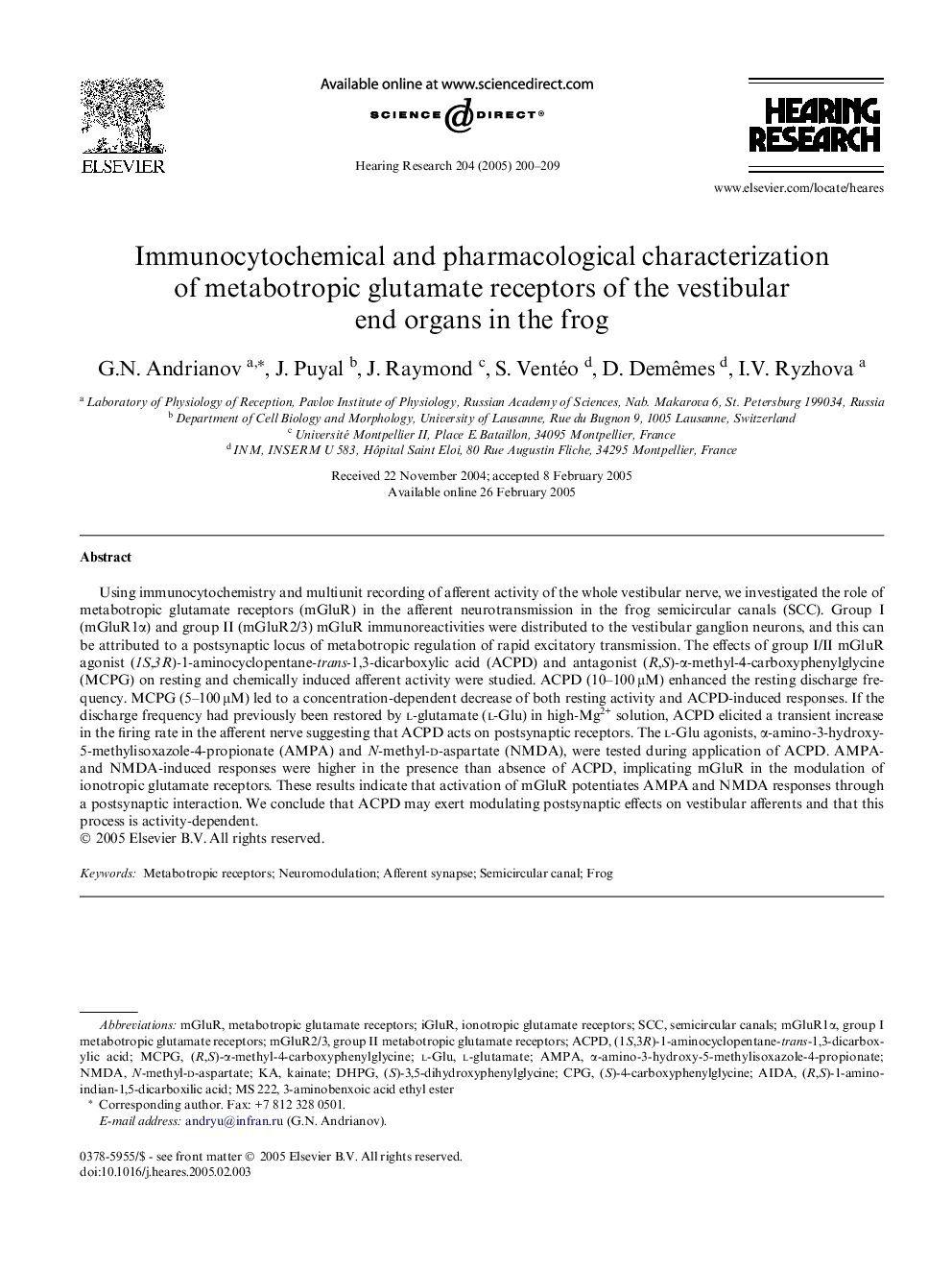| Article ID | Journal | Published Year | Pages | File Type |
|---|---|---|---|---|
| 9436538 | Hearing Research | 2005 | 10 Pages |
Abstract
Using immunocytochemistry and multiunit recording of afferent activity of the whole vestibular nerve, we investigated the role of metabotropic glutamate receptors (mGluR) in the afferent neurotransmission in the frog semicircular canals (SCC). Group I (mGluR1α) and group II (mGluR2/3) mGluR immunoreactivities were distributed to the vestibular ganglion neurons, and this can be attributed to a postsynaptic locus of metabotropic regulation of rapid excitatory transmission. The effects of group I/II mGluR agonist (1S,3R)-1-aminocyclopentane-trans-1,3-dicarboxylic acid (ACPD) and antagonist (R,S)-α-methyl-4-carboxyphenylglycine (MCPG) on resting and chemically induced afferent activity were studied. ACPD (10-100 μM) enhanced the resting discharge frequency. MCPG (5-100 μM) led to a concentration-dependent decrease of both resting activity and ACPD-induced responses. If the discharge frequency had previously been restored by l-glutamate (l-Glu) in high-Mg2+ solution, ACPD elicited a transient increase in the firing rate in the afferent nerve suggesting that ACPD acts on postsynaptic receptors. The l-Glu agonists, α-amino-3-hydroxy-5-methylisoxazole-4-propionate (AMPA) and N-methyl-d-aspartate (NMDA), were tested during application of ACPD. AMPA- and NMDA-induced responses were higher in the presence than absence of ACPD, implicating mGluR in the modulation of ionotropic glutamate receptors. These results indicate that activation of mGluR potentiates AMPA and NMDA responses through a postsynaptic interaction. We conclude that ACPD may exert modulating postsynaptic effects on vestibular afferents and that this process is activity-dependent.
Keywords
mGluRMS 222mGluR1αAfferent synapseGroup II metabotropic glutamate receptorsGroup I metabotropic glutamate receptorsACPDMCPG(s)-4-carboxyphenylglycineSCCAIDAAMPACpGDHPGNMDAN-methyl-d-aspartateα-amino-3-hydroxy-5-methylisoxazole-4-propionate(S)-3,5-dihydroxyphenylglycineiGluRl-GlumGluR2/3l-glutamateFrogNeuromodulationsemicircular canalsemicircular canalsKainateMetabotropic receptorsMetabotropic glutamate receptorsionotropic glutamate receptors
Related Topics
Life Sciences
Neuroscience
Sensory Systems
Authors
G.N. Andrianov, J. Puyal, J. Raymond, S. Ventéo, D. Demêmes, I.V. Ryzhova,
